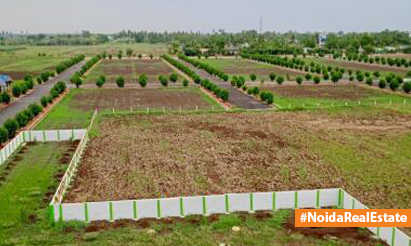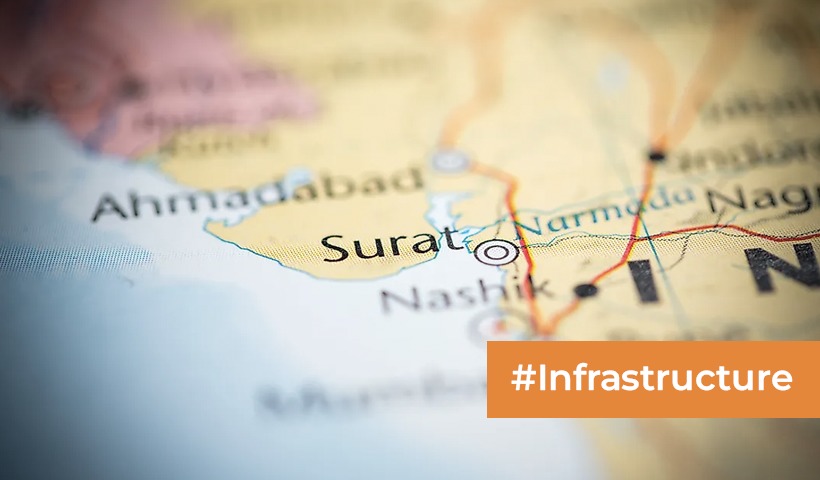Is Vertical Development Necessary in Delhi?
Is there a true demand for vertical development in the National Capital?
Many analysts believe that the city has been overburdened, so a similar result of population development and success may be witnessed in neighbouring places. As a result, they believe that effects on the development may be the only viable option in the future.
Delhi has seen significant change over the years, but it has successfully maintained its essential architectural or developmental foundation. In terms of development, it has primarily been a horizontal city. Unlike other metro cities such as Mumbai or Bangalore, Delhi has only a few uncommon high-rises or skyscrapers. Standalone houses and apartment towers with heights barely reaching tree levels, as inhabitants and specialists refer to them, make up a large portion of the Capital. Is it therefore necessary for New Delhi to build vertically? It appears to, according to specialists.
Those who also believe but while trying to implement vertical development in the innovative big plan for the forthcoming megapolis of tomorrow, the character and historical importance of monuments and buildings in New Delhi such as the Vikas Minar, Ashok Hotel, Akbar Bhawan, Dak Tar Bhawan, should also be preserved.While scholars have praised the initiative, they have also advocated for stricter steps to conserve post-independence architecture and other cultural, cultural, and historically relevant buildings in the city. According to reports, INTACH already has produced a list that includes the Vigyan Bhawan, Nehru Memorial Library, Baha’i Temple, Asiad Games Village, Garden of Five Senses, Supreme Court, National Science Centre, India Habitat Centre, and others. The Central Vista initiative would already have a significant effect on the National Capital’s future layout.
New Rules and How They Might Play Out
The urban development ministry has apparently granted its green light to land pooling legislation as the Capital is being rebuilt. It will eventually allow for the construction of new residential complexes on 20,000 hectares of farmland on the city’s outskirts. Although only half of the whole area, which spans 89 villages on the outskirts of Delhi, is built, it will assist meet the city’s expanding housing demand. According to estimates, it will be primarily upward development, with each apartment building having somewhere between 15 and 30 storeys. Because consumption of resources is greater in the suburbs, cities all over the world adopt the vertical way, which explains the urban density in their cores. They will necessitate more transport routes, highways, and automobile use, resulting in increased pollution. Vertical growth is strictly regulated in low-density areas of Delhi’s central district.
Delhi always has been a horizontal city, only with a few high-rises, mostly in business districts, and a few towers in Dwarka, Mayur Vihar, as well as in other regions. Nevertheless, there are elevation restrictions that restrict buildings to what we previously referred to as tree level. Today, city planners are looking to release newer land on the fringes in order to expand vertically. It will contribute considerably to housing stock, gradually lowering real estate prices and supporting the city’s fast rising population, which, according to several reports, would outnumber Australia’s whole population by 2030.
What Are The Potential Pitfalls?
In New Delhi, though, there’s many a few possible vertical growth problems. To keep up with rising urban infill and population growth, the Capital will have to extend its already-strained infrastructure and resources. It will put a strain on roads, automobile usage, electricity, water, sewer lines, garbage disposal, and other infrastructure. High-rise buildings will also need more water and electricity for common areas including lawns and lifts.
The city’s annual electricity consumption is increasing, but the same is true for water requirements. The majority of land pooling regions are among those with limited water supplies. Villages on the outskirts of the National Capital are already being squeezed by vertical townships in Noida, Gurgaon, Ghaziabad, and other NCR locales.
So, what’s the plan?
Several specialists believe that sustainable growth is really the only way to preserve a healthy rate of vertical expansion in or around the National Capital. Solar panels, waste-water treatment plants, rainfall collection, and other measures could be implemented by the DDA in future townships. Although individuals are indeed used to paying more money for DDA apartments in the existing situation, the upfront cost will be higher.
The Master Plan for Delhi 2041 incorporates vertical mixing, the green-blue aspect, as well as the TDR (tradable floor area ratio or transfer development right). According to DDA authorities, community and educational amenities, as well as commercial activities, will be permitted on the bottom floor, and vertical mixing will reduce overall pandemic-related potential susceptibility.The coronavirus outbreak has encouraged the DDA to investigate this approach in conjunction with mixed residential and commercial projects. These approaches will be encouraged, allowing for the near vicinity of all key services, corporate centres, and housing, resulting in more self-sufficient zones for isolation, reduced overall commutes, and healthier public zones.
The DDA’s Additional Suggestions
Vertical mixing allows a variety of services or amenities to be combined in the same building on any given plot. Commercial facilities such as retail stores will be located on the lower floors, while residential and/or commercial spaces will be located on the top floors. This regulation prohibits the use of clinics, schools and universities, gardens, healthcare facilities, petrol pumps, and any form of prison facility.For all projects, the BGF (blue-green factor) will attempt to maintain blue and green levels. Unused FAR will be able to be exchanged at other sites under the TDR policy. It may, however, only be used in TDR receiving areas indicated in the Master Plan. It will only be offered in cases where development rights or land are being given away for a public purpose.
The DDA also has proposed regulations for decrease the quantity of vehicles on the road, improving mass transit, dust control, lower-polluting business ventures, appropriate queues and plants for lowering noise/air pollution, greater BGF moral standards, native plant and tree lifeforms as pollution filtration, and regular intervals monitoring of environmental asset wellbeing.
Disclaimer: The views expressed above are for informational purposes only based on industry reports and related news stories. PropertyPistol does not guarantee the accuracy, completeness, or reliability of the information and shall not be held responsible for any action taken based on the published information.




